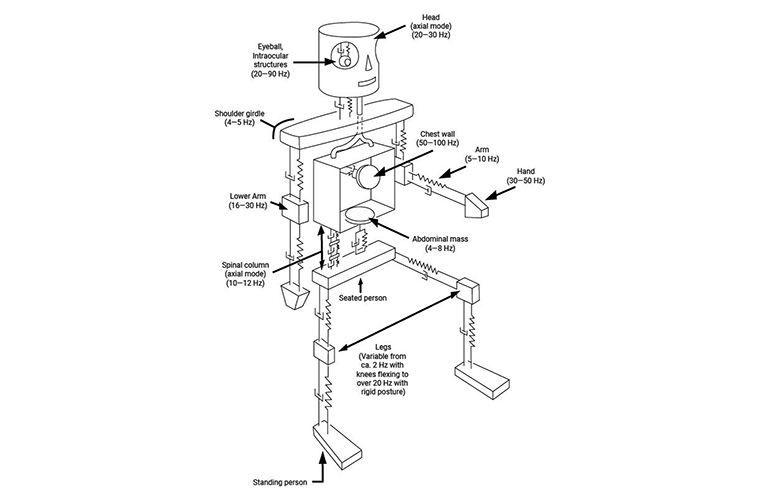Main Menu
- Home
- Product Finder
- Calibration Systems
- Calibration Services
- Digital Sensing
- Industrial Vibration Calibration
- Modal and Vibration Testing
- Non-Destructive Testing
- Sound & Vibration Rental Program
- Learn
- About Us
- Contact Us
 Whole body vibration may be hazardous to your health - it can cause lower back pain, motion sickness, bone damage, and more. Measuring vibration is an important step in understanding these potentially adverse effects.
Whole body vibration may be hazardous to your health - it can cause lower back pain, motion sickness, bone damage, and more. Measuring vibration is an important step in understanding these potentially adverse effects.
But what are the most important considerations in making whole body vibration measurements?
It turns out, as "Mr. Resonance" illustrates to the right, different parts of the human body have different resonances. Certain vibration frequencies can be more damaging to some body parts than others. For example, vibrations between 20 Hz and 30 Hz can cause resonance between the head and shoulders with vibration amplification of up to 350%!
How do we handle this when measuring human vibration? Researchers have come up with "weightings" to account for these differences. These weightings are conveniently built in to vibration meters such as the Larson Davis HVM200.
The HVM200 Human Vibration Meter simplifies the process of measuring human vibration with built-in frequency weightings and preprogrammed measurement settings for different health and comfort applications.
Although there is strong consensus that vibration can cause damage to the human body, the effects are complex and not yet completely understood. According to ISO Standards, we understand much more about the appropriate weightings to use for human comfort than for human health. The effects of vibration on health are best understood for a person in the seated position. The HVM200 has built-in settings for health in seated positions as well as user comfort in seated, standing, and recumbent positions.
Need help making sense of all this? View a chart of common human vibration measurement scenarios with the weighting factors to use for each.